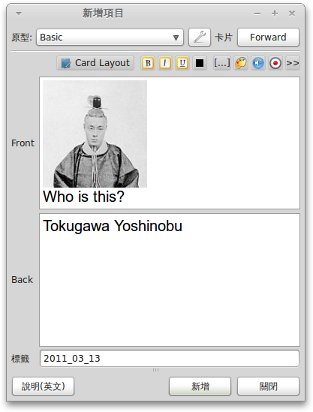Use pictures of important faces in flashcards
If you use Anki to study history, politics or some other humanities subject, you’ll probably be creating flashcards with a lot of names of people, places and other entities.
These are often easy to confuse, particularly if they’re in a language you have little knowledge of (which is likely if you’re studying an issue from an East Asian regional perspective).
Faces stick in your memory
An easy way to remember the material more easily is to include a flashcard with an image for each of these things. People’s faces are a good example. If you’ve got a picture of Tokugawa Yoshinobu’s face in your deck, then you’ve got something to which you can pin other information about him.

It’s often a lot easier to to do this with an image than a name, as it becomes a kind of icon in your memory to which you can attach various other facts.
Any visual reference will do
It doesn’t particularly matter whether the image is good quality, in colour or even an actual image of the person you’re learning about. It just needs to be a mental reference point. This tactic can be applied to any entity, and as you go further into a topic it becomes more and more valuable to be able to quickly distinguish the different names in your mind.
Wikipedia or Google will nearly always provide a usable image for this purpose. It might be worth cropping them down to focus on faces or other salient details that will lodge more securely in your memory.
Everything’s relative
This all ties into an important point about using flashcard systems: everything should be related and inter-linked as much as possible. Try to create flashcards that use the information on other flashcards, or overlap with their content. Building these associations is good for understanding as well as memory.
